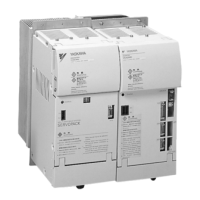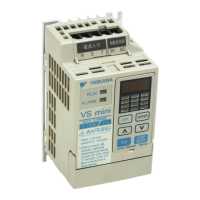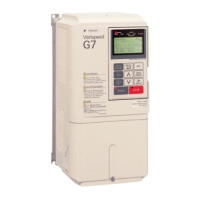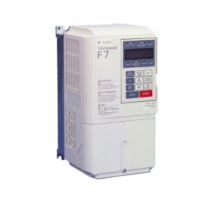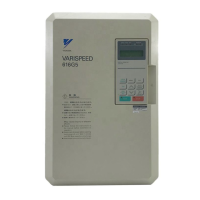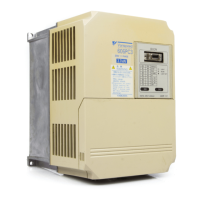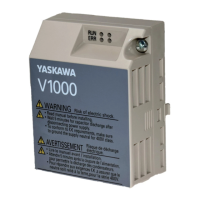9. Specifications
109
* 1. Based on a standard 4-pole motor for max. applicable motor output.
* 2. Shows deceleration torque for uncoupled motor decelerating from 60 Hz
with the shortest possible deceleration time.
* 3. Minimum permissible load: 5 VDC, 10 mA (as reference value)
* 4. Temperature during shipping (for short period).
* 5. If the wiring distance between Inverter and motor is long, reduce the
Inverter carrier frequency. For details, refer to Reducing Motor Noise or
Leakage Current Using Carrier Frequency Selection (n46) on page 64.
* 6. The ground fault here is one which occurs in the motor wiring while the
motor is running. A ground fault may not be detected in the following
cases.
• A ground fault with low resistance which occurs in motor cables or ter-
minals.
• A ground fault occurs when the power is turned ON.
Standard Specifications (400 V Class)
Voltage Class 400 V 3-phase
Model CIMR-
J7∗A
3-phase 40P2 40P4 40P7 41P5 42P2 43P0 43P7
Max. Applicable Motor
Output kW
*1
0.2 0.4 0.75 1.5 2.2 3.0 3.7
Output Characteristics
Inverter
Capacity (kVA)
0.9 1.4 2.6 3.7 4.2 5.5 6.6
Rated Output
Current (A)
1.2 1.8 3.4 4.8 5.5 7.2 8.6
Max. Output
Voltage (V)
3-phase, 380 to 460 V (proportional to input voltage)
Max. Output
Frequency (Hz)
400 Hz (Programmable)
Power Supply
Rated Input
Voltage and
Frequency
3-phase, 380 to 460 V, 50/60 Hz
Allowable
Voltage
Fluctuation
−15% to +10%
Allowable
Frequency
Fluctuation
±5%
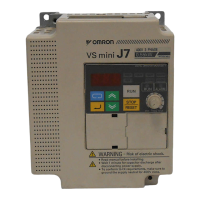
